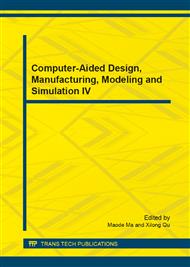p.1056
p.1061
p.1066
p.1071
p.1079
p.1084
p.1089
p.1094
p.1098
Hydrolysis Dynamics of Diquat in Aquatic Environment
Abstract:
The hydrolysis of diquat in deionized water, river water, and ground water were studied by incubation at 25°C and hydrolysis of diquat at different temperature (10°C, 25°C, and 35°C) in pH9 were investigated in the paper. The degradation was followed by GC. The experimental results indicated that the kinetics process of diquat can be described by the first-order reaction law, the hydrolysis rates of diquat in deionized water, river water, and ground water were almost the same; the pH was a critical factor of the rate of the degradation of diquat in aqueous solutions,diquat was stable in acid water and neutral water, but its hydrolysis easily took place in basic water; the higher temperture was helpful for the hydrolysis process during the range from 283k to 308k in basic water, the activation energy of hydrolysis for diquat was 25.89kJ/mol, activation entropy was –191.81 J/mol.K, and the temperature coefficient was 1.52.
Info:
Periodical:
Pages:
1079-1083
Citation:
Online since:
October 2014
Authors:
Keywords:
Price:
Сopyright:
© 2014 Trans Tech Publications Ltd. All Rights Reserved
Share:
Citation:


